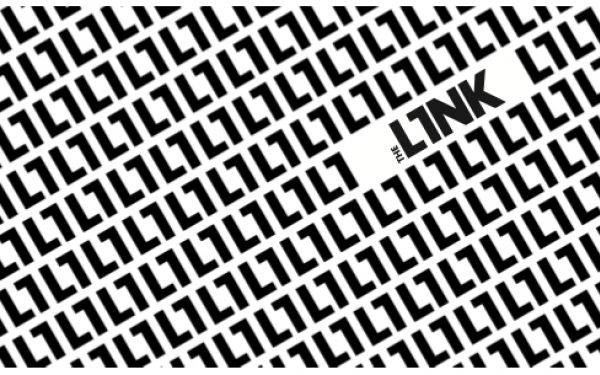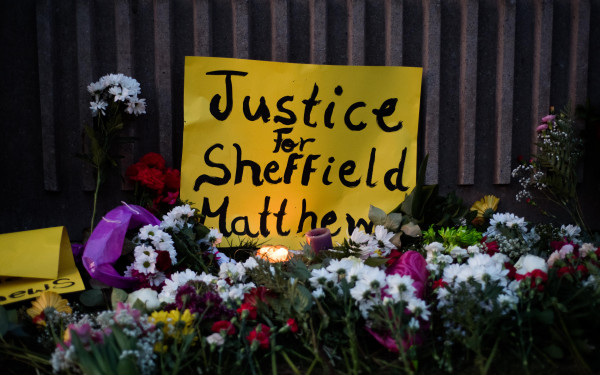Why Are Cops Allowed to Wear Political Symbols?
Like It or Not, “Blue Lives Matter’’ Flags Are a Political Statement
Have you ever noticed police officers wearing Canadian flags with a blue stripe on their bulletproof vests? Well, not only are these patches racist, they’re also quite likely illegal.
In 2014, the Montreal Police Brotherhood, a union for police in the city, asked its members to stop wearing their uniform pants and instead wear whatever pants they wanted, as a pressure tactic against cuts in their pensions. During the last four years, people got used to seeing officers wearing a random assortment of pants, mostly camouflage cargo pants that became known in the media as “clown” pants.
They chose this tactic because the Police Corps have very limited rights to protest and cannot strike by law under Québec’s Labour Code.
These pressure tactics ended in October 2017. Martin Coiteux, then minister of public security, passed Bill 133, which forbids officers from altering their issued outfits.
“We have very limited rights to protest; they were about to steal our pensions that we earned. Like it or not, the camo pants—referred to as “clown pants”—worked,” said one officer who wished to have their identity protected.
In 2014 a group of American police officers started a movement called Blue Lives Matter, a bad play on words of Black Lives Matter, the anti-racist movement they describe as an anti-police movement.
Don’t get me wrong, being a police officer is a dangerous and hard job, and I believe they should get to publicly voice their concerns. I supported the “clown’’ pants. The fact that they reached an agreement for their pension plan and that the tactic was outlawed only shows that it worked.
But, comparing work-related issues faced by police to the systemic racism which they’re too often responsible for violently enforcing is outrageous and makes a mockery of a genuine movement fighting for equality for Black and Brown people. It’s downright racist.
In Canada, supporters of the Blue Lives Matter movement chose the Thin Blue Line as a logo; a black and grey Canadian flag overlaid with a thin blue stripe.
It didn’t take long for officers in Montreal to be seen wearing Thin Blue Line patches.
What the TBL represents for law enforcement is the barrier between law and order, and civil anarchy. It takes a different meaning for civil society, symbolizing the “esprit de corps” prohibiting officers from talking
publicly about their colleagues’ misbehaviour.
The officer who asked for their identity to be protected said that they estimate that between 10 and 40 per cent of their colleagues wear TBL patches while on patrol.
These patches should be considered a political message, and put in question law enforcement’s neutrality.
These patches should be considered a political message, and put in question law enforcement’s neutrality.
“I don’t see Blue Lives Matter patches as a big deal, just like we wear black ribbons in memory of our fallen brothers, but it’s definitely in opposition to Black Lives Matter. You know, cop culture is pretty conservative and that’s reactionary,” said the same officer.
Criminal defence lawyer for marginalized communities Arij Riahi said that since no judgments have yet been passed surrounding patches, it remains open to interpretation. According to the legislation, “Every police officer or special constable must, while performing his or her duties, wear the full uniform and wear or carry all the equipment issued by the employer, without substituting any other element for them. He or she may not alter them, cover them substantially or in a way that hides a significant element.’’
“If you consider sticking patches to your bulletproof vest an alteration, then it would appear they’re indeed in violation of the Police Act,” she said.
“For me the interesting question is; why do we let our police wear symbols that are downright hostile to the populations they’re supposed to protect? For example In Val-d’Or, Sureté du Québec officers began wearing bracelets that read “144” in solidarity with their colleagues who allegedly sexually assaulted Indigenous women,” said Riahi.
An officer was even spotted in Hochelaga by one of my colleagues wearing a Punisher skull patch. The Punisher is a Marvel anti-hero who shoots criminals instead of bringing them to justice in the traditional way; an even more hardcore version of Batman, if you will. I don’t know what kind of message this particular officer was trying to convey but it’s beyond me why SPVM brass would tolerate such threatening symbols.
Once again, Montreal police go out of their way to display hostility towards the population they pledged to serve and protect.
Much of last April was spent watching MNAs arguing whether or not Muslim and Sikh cops should be allowed to wear the hijab or turban. Police technology student Sondos Lamrhari even took the brunt of it, with MNAs arguing on TV if she should get kicked out of school. As if a handful of officers wearing some kind of religious headwear signified a necessary return to Duplessis’ Grande Noirceur of the 50s, when the Catholic Church was in bed with the state.
“I don’t know if it’s explicitly racist, the guys would tell you it’s really about them, they don’t really think beyond the first degree. […] I understand how people of colour could see it as provocation or hostile,” said the same officer.
This is a serious trend among Montreal police officers, much more so than the handful of recruits asking to wear religious symbols. The province is apparently fine with officers arboring political messages, as long as they’re not questioning the status quo they are such an integral part of.
But how can the police say they protect and serve everyone while wearing symbols and imagery that imply the opposite?


_600_832_s.png)




_600_375_s_c1.png)